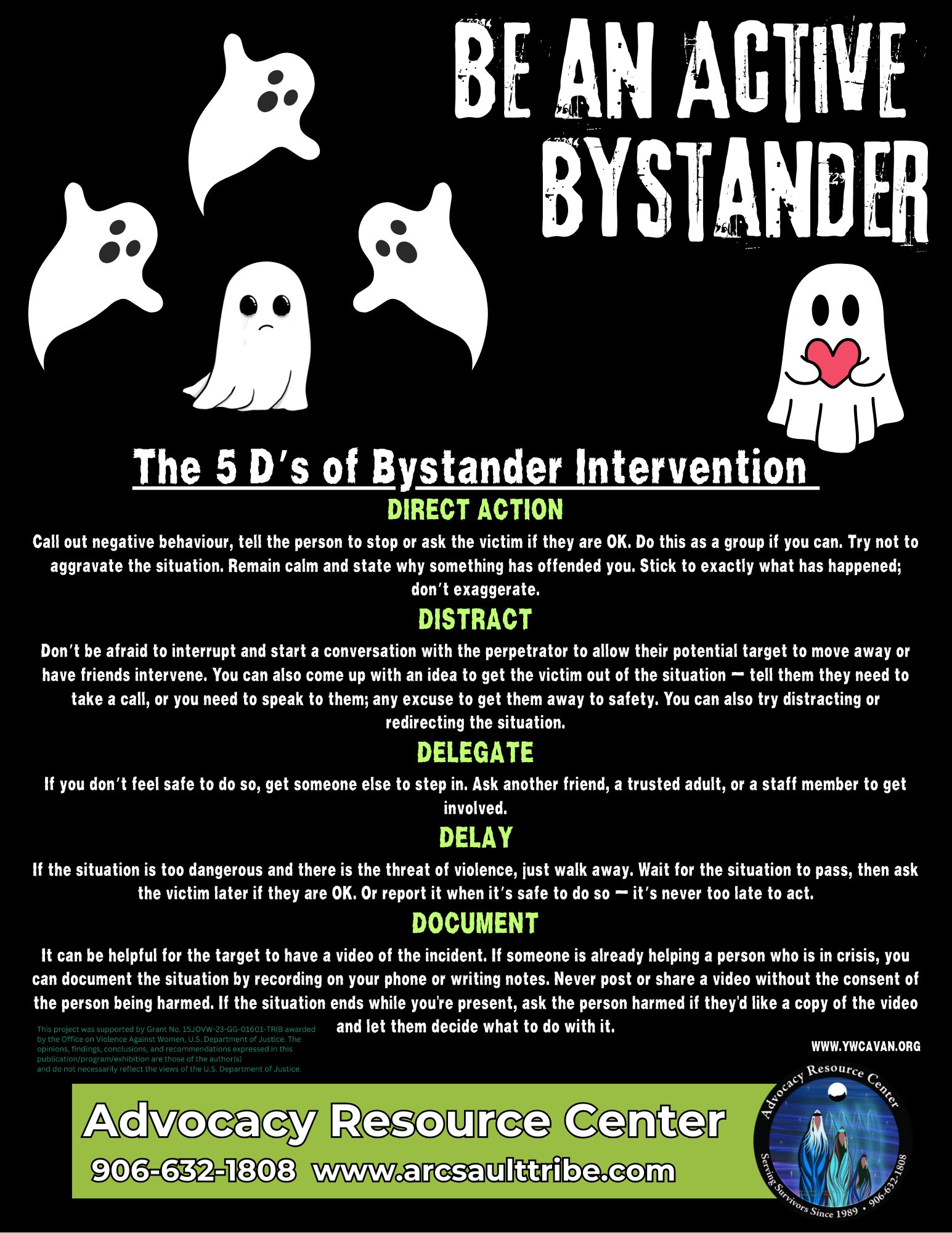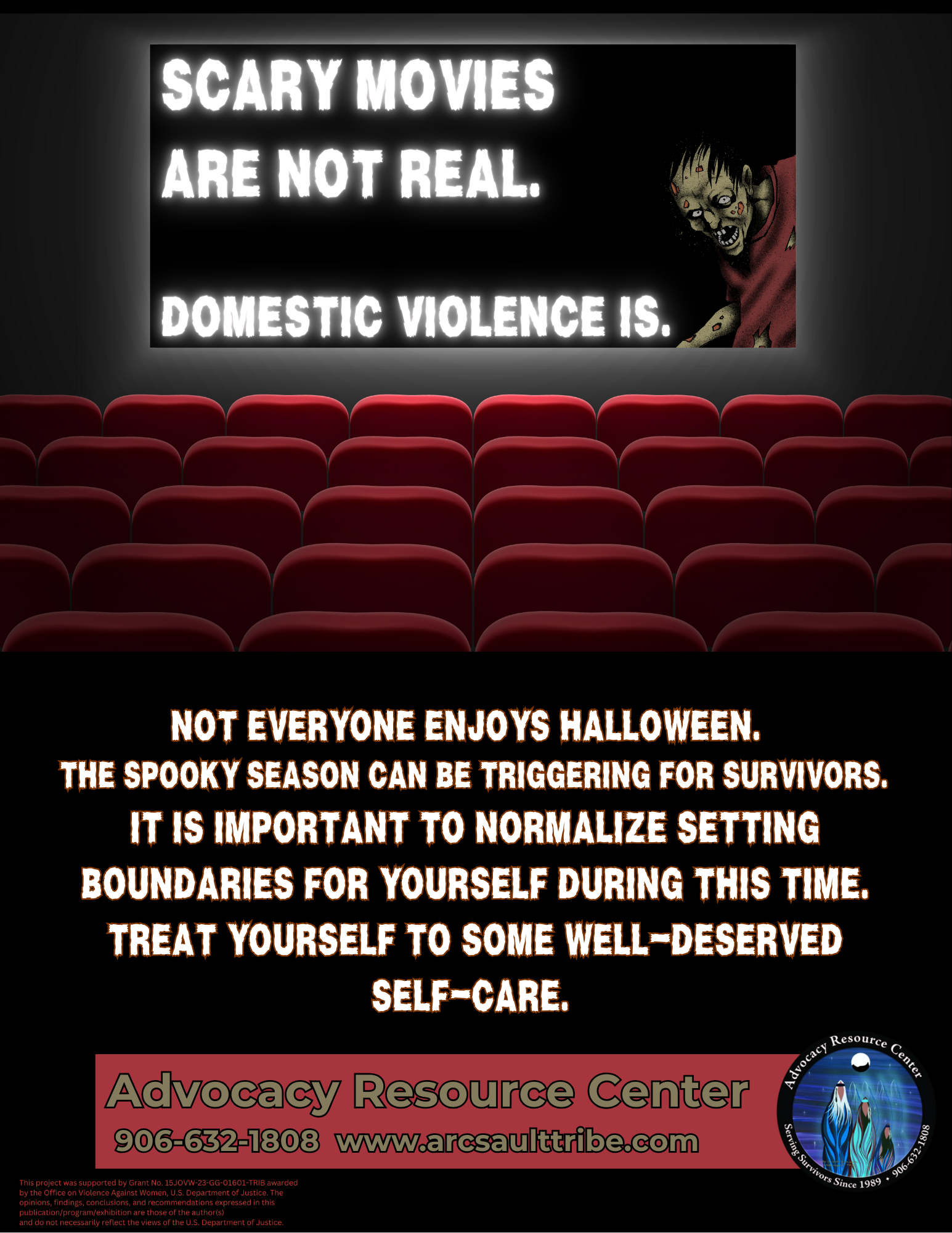October is Domestic Violence Awareness Month

Domestic violence or "intimate partner violence" can be defined as a pattern of behavior in any relationship that is used to gain or maintain power and control over an intimate partner. Abuse can be physical, sexual, emotional, economic, or psychological actions or threats of actions that influence another person. This includes any behaviors that frighten, intimidate, terrorize, manipulate, hurt, humiliate, blame, injure, or wound someone. Domestic abuse can happen to anyone of any race, age, sexual orientation, religion, or gender. Domestic violence can occur within a range of relationships, including gay or straight couples, couples who are married, living together, or dating. Domestic violence affects people of all socioeconomic statuses and education levels. Please note that “domestic violence doesn’t always look the same. However, one feature shared by most abusive relationships is that the abusive partner tries to establish or gain power and control through many different methods at different moments”, according to an article called Recognizing the Signs of Abuse from www.thehotline.org.

Not only are intimate partners victims of domestic violence, but children and other household family members, even family pets, can be victims of domestic violence. Domestic violence is based on power and control over the victim. Many times, victims are unaware they are even in an abusive relationship. There are many indicators of domestic violence, and it is essential to evaluate your relationship if you feel your partner matches the criteria of an abuser.
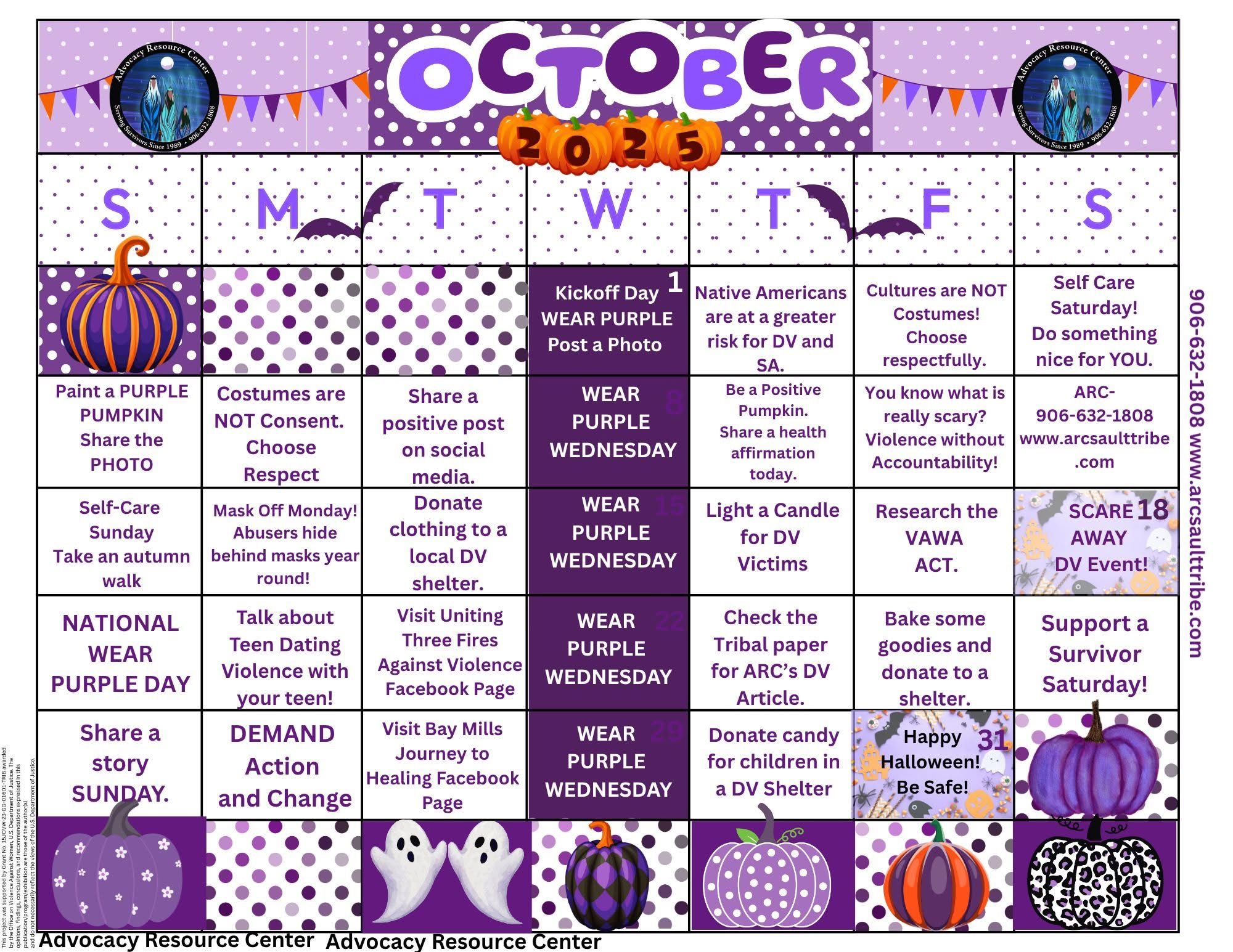
Abuse comes in many forms, including physical abuse and sexual abuse, emotional and psychological abuse, threats and intimidation, and stalking. The following are signs that your partner exhibits intimidation or bullies, threatens, or controls you: Accuses you of having an affair Blames you for the abuse Criticizes you Tells you what to wear and how to look Threatens to kill you or someone close to you Throws things or punches walls when angry Yells at you and makes you feel inferior Your partner may control you financially by doing the following: Keeping cash and credit cards from you Giving you an allowance and/or making you explain every dollar you spend Preventing you from working at all or at specific places Steals money from you or your friends or family Will not allow you to have money for necessities like food and clothing Your partner may control you by:
- Cutting you off from family and friends
- Makes you ask permission to see friends and family
- Embarrasses you in front of others, causing you to want to avoid others
Your partner physically abuses you:
- Abandons you in places you don’t know
- Attacks you with weapons or objects
- Keeps you from eating, sleeping, or getting medical care
- Locks you in or out of your house
- Punches, pushes, kicks, bites, pulls hair
Your partner sexually abuses you by:
- Forces you to have sex
- Makes you dress in a sexual way
- Makes you feel like you owe them sex
- Tries to give you an STD
- Refuses to use condoms or birth control
- Withholds sex and affection as a punishment
Here are some signs to look for if you feel someone you know is being abused:
- Has excuses for injuries
- Personality changes, exhibiting low self-esteem
- Constantly checking in with partner, asking for permission, or seeming anxious while away from partner
- Never having money on hand
- Overly worried about pleasing their partner
- Skipping work, school, or social settings for no apparent reason
- Wearing clothes that don’t match the season, such as long sleeves in the summer, to cover bruises
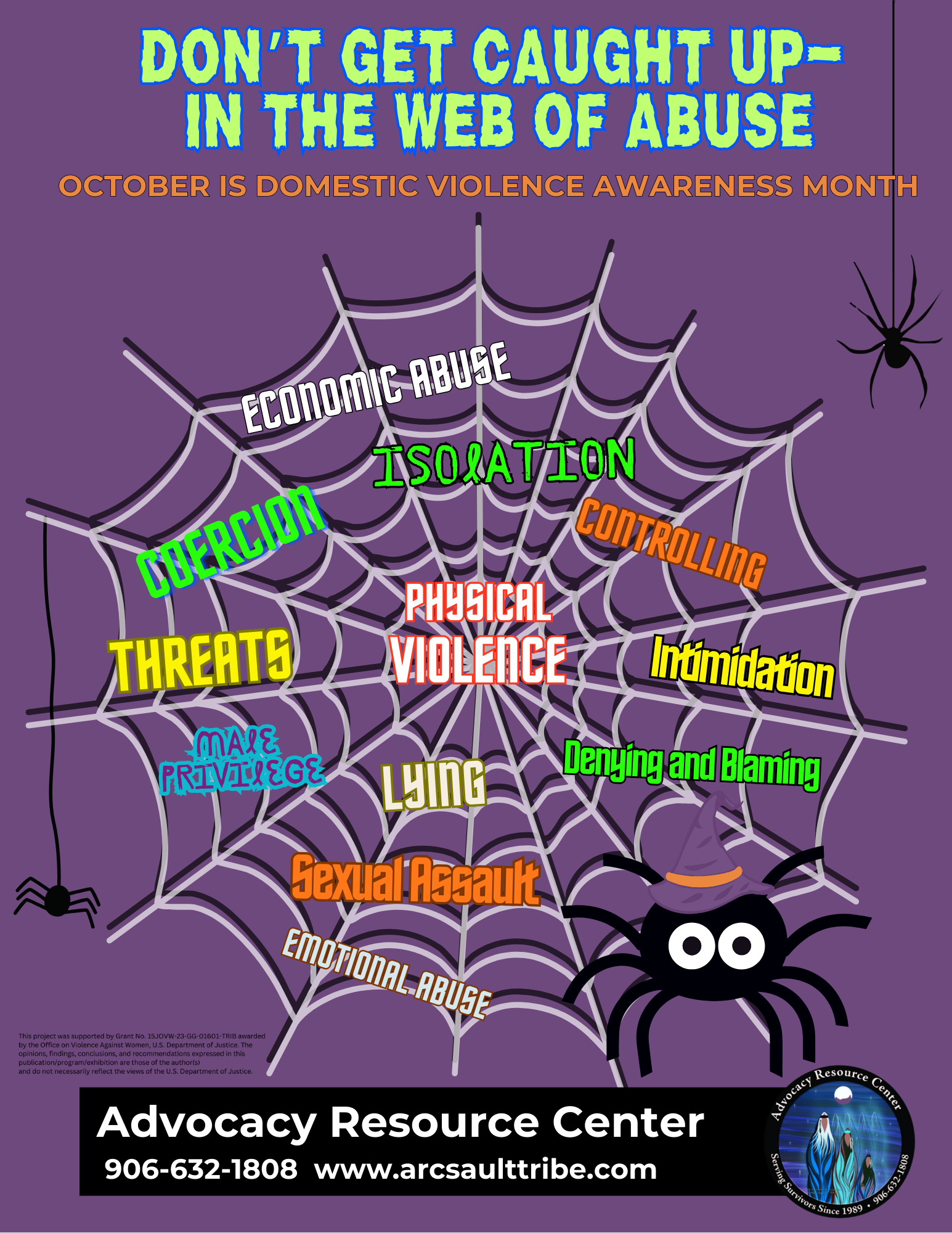
Both women and men can be victims of domestic or intimate partner violence. The signs and actions can be the same whether the abuser is a male or female. In the LGBTQ community, some of the signs may differ- abusers may: Stalking is also a form of domestic abuse. “Stalking is a pattern of repeated and unwanted attention, harassment, contact, or any other course of conduct directed at a specific person that would cause a reasonable person to feel fear”, according to the Department of Justice. As technology and digital platforms continue to grow, so do the chances that someone could interact with you in an unwanted, sexual manner. The Advocacy Resource Center has help available.
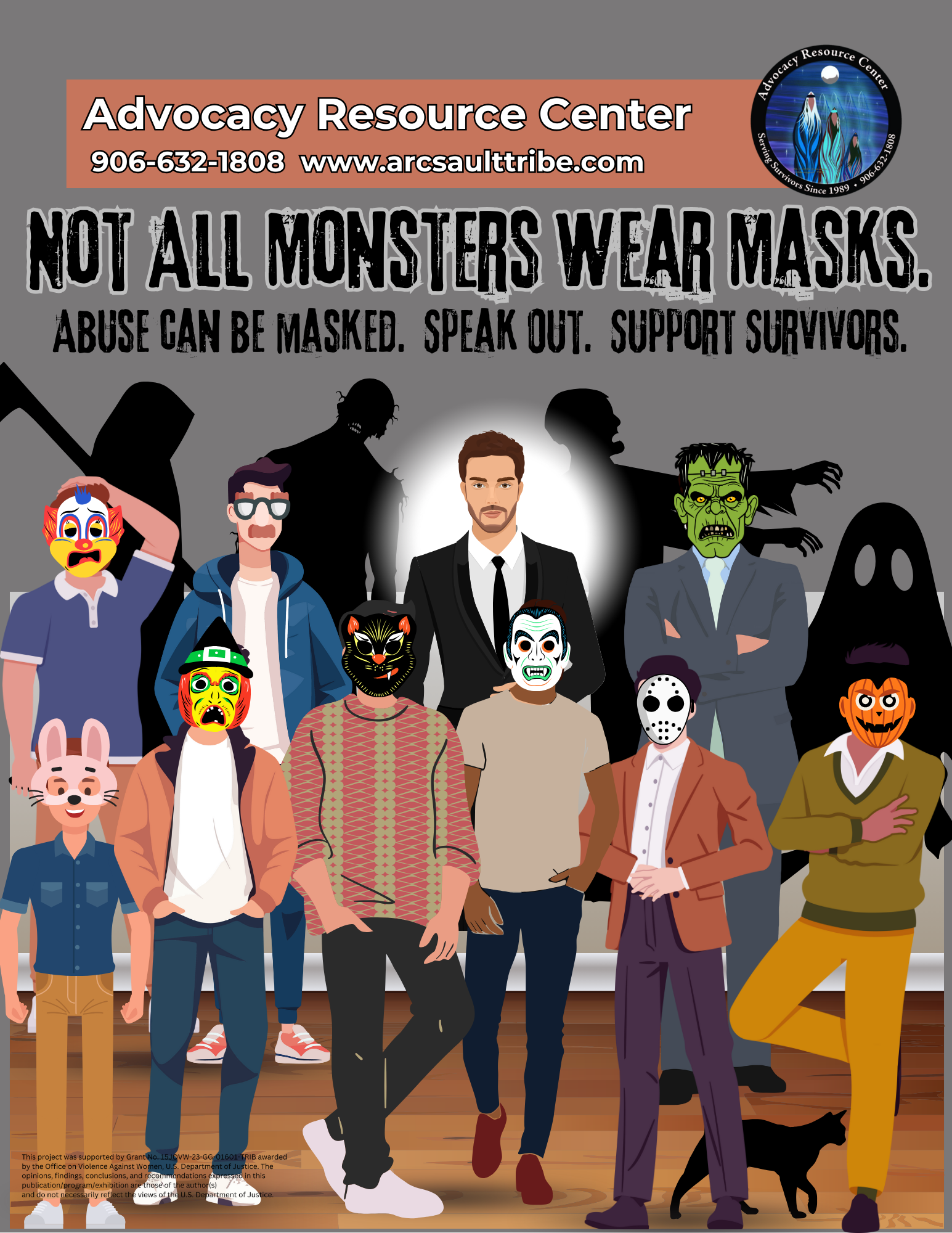
Are YOU an Abuser? Suppose you recognize that you are abusing your partner with any of the behaviors mentioned above. In that case, there may be resources available in your community to assist you in ending the abusive behaviors. Contact Sault Ste. Marie Tribal Court at 906-635-4963 for assistance. The Men’s Education Group is available with or without a court-ordered referral. There is a $20 fee per group, $20 for intake and orientation. Fee must be paid prior to the meeting. The $20 fee can be paid weekly at the group. Participant will not be able to attend if fees are not current. The Advocacy Resource Center (ARC) has been serving survivors effectively since 1989. ARC is available for support and advocacy for crisis intervention and emotional support. The ARC can assist with safety planning and provide follow-up support. The Lodge of Bravery is open 24/7 and can provide immediate safety to survivors and their children seeking safety from intimate partner violence. You do not have to be a tribal member to seek ARC services. Contact the Advocacy Resource Center at (906) 632-1808. You are not alone. Abuse is never your fault. You may also find us at www.Facebook.com/saulttribeARC and our website www.arcsaulttribe.com for more information.


